Citrix optimization does not work although you removed ports 1494 and 2598 from the Interactive Ports label and enabled Citrix optimization on the client-side Steelhead appliance. What could be the problem? (Select 2)
-- Exhibit –
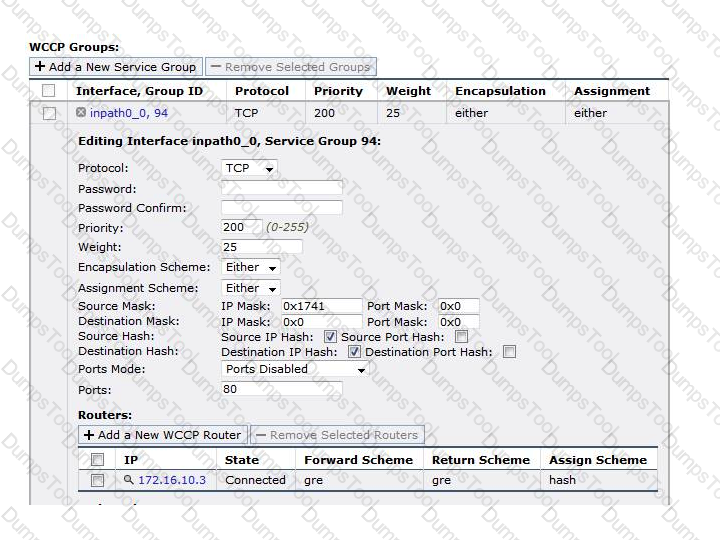
-- Exhibit --
Refer to the exhibit. In a WCCP environment with R3, SH10 and SH11, which statement below is true?
You are using TCPdumps on the server-side SteelHead to troubleshoot an application connectivity issue. The following filter is used on the TCPdump:
(host
and
ip[44:4] =
What part of the filter captures the traffic which the Interceptor has applied NAT to?
A SteelCentral Controller for SteelHead (SCC) shows ≠ against some of the SteelHeads in the list. What exactly does this mean?
Citrix remote applications, running on the server and to access printers and disk drives, are not performing well. What can you configure to improve the performance?
While performing a health check for a Steelhead appliance at a remote site, you noticed some of the pass-through traffic should have been optimized. The pass-through reason for the suspicious traffic is "SYN on WAN side". Upon further investigating, you also noticed that all of the traffic initiated at the data center is pass-through while all of the traffic initiated at the remote site is optimized. There is only one path between the data center and the remote site and both Steelhead appliance are physically in-path. What are the possible causes? (Select 2)
Which of the following are configurable attributes of an Interceptor appliance? (Select 3)
Company X has many offshore oil rigs they want to bring optimization to. The only available connection is through a satellite that has frequent bursts of packet loss. There are very few users per rig and HTTPS-based SharePoint performance is so poor they often time out pulling down even a small file. CIFS often does not work at all. They are considering the Steelhead Mobile solution to solve this problem. You suggest they deploy a Steelhead in-path at the data center and:
What happens to traffic when a Steelhead appliance reports admission control?
Refer to the exhibit.
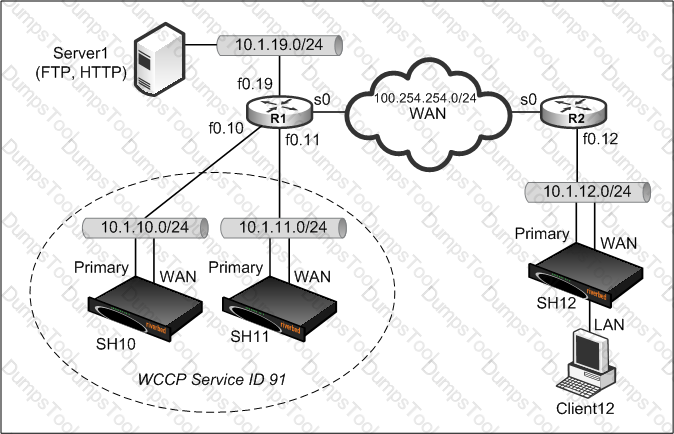
Assume that a packet being optimized by SH10 incorrectly ends up on SH11 (due to load balancing error, or similar). How can you ensure that this packet is correctly returned to SH10?
The WCCP protocol has a methodology of load balancing with two or more Steelhead appliances. What is the maximum number of buckets used for the HASH assignment?
You have a SteelCentral Controller for SteelHead Mobile with a policy that includes auto-discovery rules, enabled Location Awareness and set a minimum latency of 10ms. Your client is now in the branch office, has received this policy and the nearest SteelHead is 2 ms away. What will happen to connections?
Refer to the exhibit.
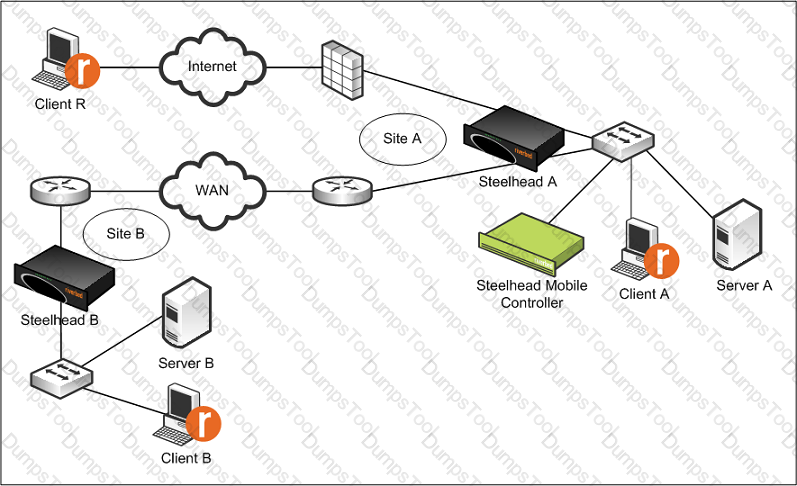
What configuration option is most relevant on Steelhead A to enable Steelhead Mobile Client R to set up the most efficient optimized connection to Server B?
Refer to the exhibit.
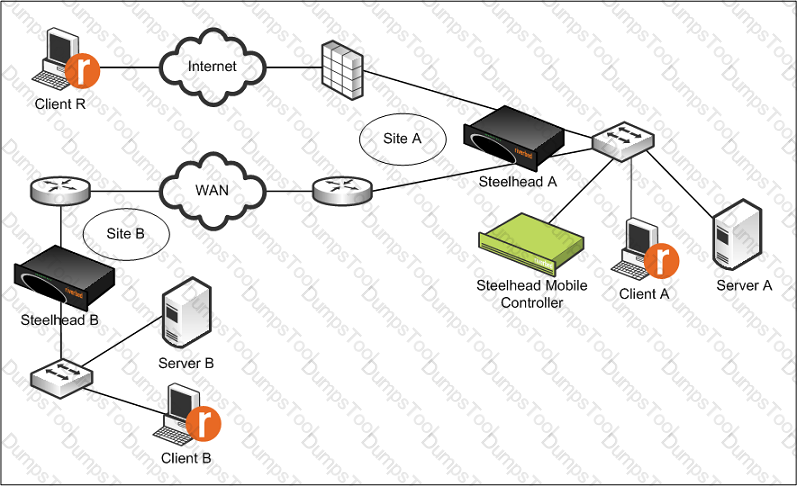
If Server A is an FTP server, which setting will enable active FTP optimization on Steelhead Mobile Client R?
The amount of memory required for Steelhead Mobile installation varies between 81 MB to 228 MB. What is the reasons for the variation?
The primary data center Interceptor is configured to fail-to-block. What best describes the result of stopping the Interceptor appliance service?
Branch office users live streaming video URL fragment requests are not optimized even though Microsoft Silverlight stream splitting is enabled. What could be the causing this? (Select 3)
You deploy a pair of SteelHead appliances in-path. At the server-side, there is a firewall inspecting traffic between the SteelHeads. The firewall must see the original client and server IPs and is configured to drop packets where the same host pairs and port pairs are reused within 30 seconds of termination. Which addressing mode would workaround this issue?
-- Exhibit –
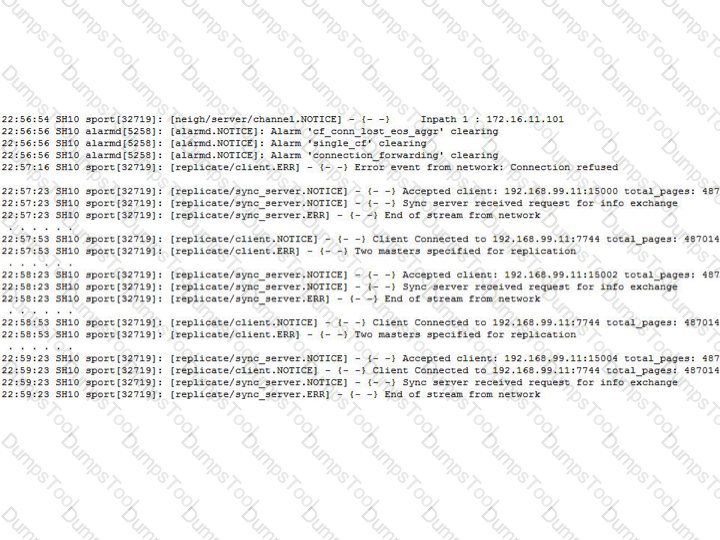
-- Exhibit --
Refer to the exhibit. A Steelhead administrator has recently decided to configure data store synchronization between 2 Steelhead appliances on his data center. After applying the configurations, he noticed that it is not working. According to the logs provided, what would you suggest would fix the problem?
When deploying Interceptor appliances in a parallel cluster what feature must be disabled to ensure packet redirection upon failure?
A customer wants to deploy parallel Interceptor appliances. How should an Interceptor appliance be configured in relation to another parallel Interceptor appliance?
A customer with no Steelhead appliances currently deployed wants to test Steelhead Mobile on a client that connects to corporate through a VPN over the Internet. The customer has the requirement that there be no network disruptions during the initial testing phase. Which of the following would work?
The primary purpose of setting proxies (found on Networking – Proxies) on the Interceptor is to:
If the VPN concentrator that a Steelhead Mobile client connects to is not in path with a Steelhead appliance, what changes could be made to the Riverbed infrastructure to allow optimization from the Steelhead Mobile clients?
When upgrading a Virtual Steelhead appliance, what steps can be taken to preserve the existing datastore?
In the exhibit,
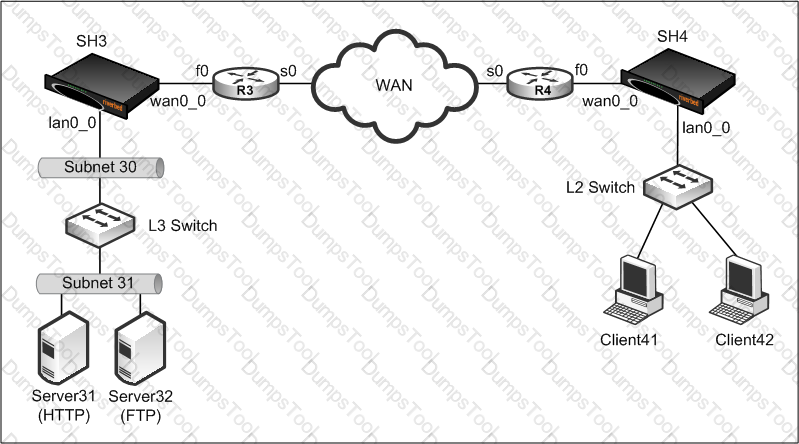
there is a resident firewall inside the WAN cloud that drops packets with any TCP option. The customer allows you to use fixed-target rules instead. The firewall policy can only allow unassigned ports 7750-7751 to pass-through it. Additionally, the SH3 has been configured with service port 7750, while SH4 has been configured with service port 7751. Which of the following fixed-target rule specification is correct?
When using Correct Addressing, without Enhanced Auto-discovery (EAD), what is the size of the probe response in the return SYN/ACK packet from the server-side Steelhead appliance?
How do you clean the datastore on a Steelhead appliance?
1) > restart empty
2) > reload clean
3) # restart empty
4) # restart clean
5) (config) # reload clean
In the exhibit,
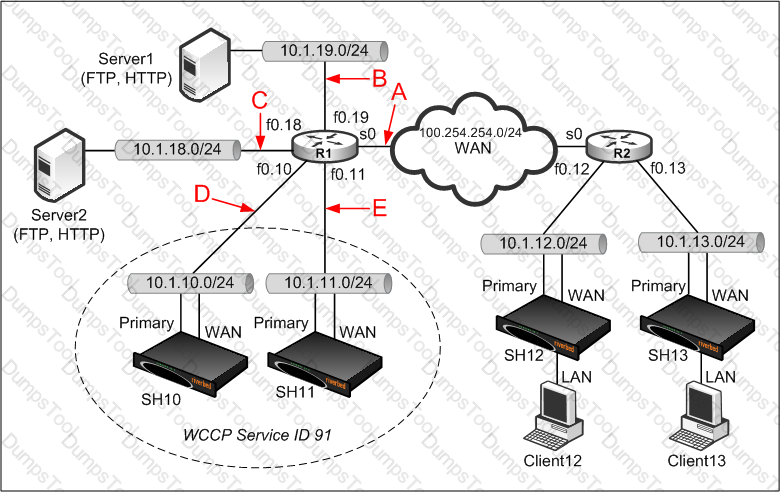
where should the WCCP redirection take place for server return traffic, assuming redirect IN is used? (Select 2)
In an implementation using a 4-port card, which interface could be used as the Connection Forwarding neighbor? (Select 2)
Which of the following statements are true about server-side out-of-path deployments? (Select 4)
A customer noticed that after deploying the Steelhead between their switch and router, OSPF takes much longer to re-converge after the router fails. Which RiOS feature can you enable to reduce the convergence time?
Which of the following configuration policies are supported on the CMC appliance? (Select 4)
Which physical Steelhead interface communicates with the Interceptor appliance?
Your Steelhead appliance deployment includes users accessing the Internet from branch offices with the traffic being back-hauled to the data center before going out to the Internet. However, HTTP latency optimization does not appear to be very effective, and in certain cases, is slower than without optimization. What settings might help with this Internet-bound traffic?
Refer to the exhibit.
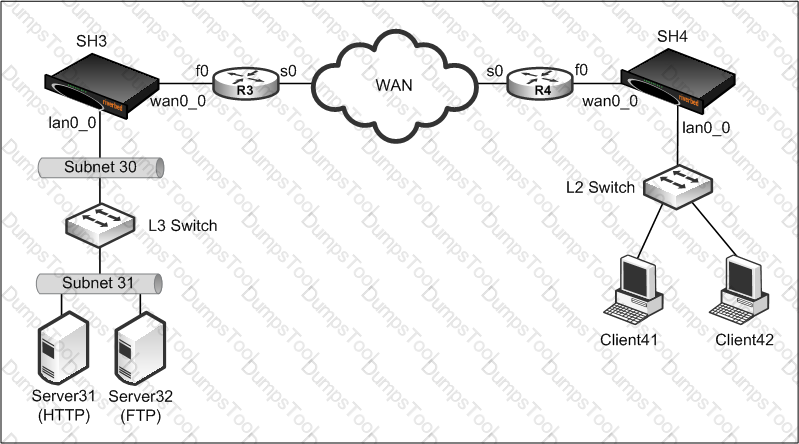
SH3 and SH4 are able to optimize FTP and HTTP sessions between Client41 and the respective application hosts Server31 and Server32. However, optimization seems to be a problem for Client42 and these application hosts. A quick check on SH3 and SH4 registers neither optimized nor pass-through traffic from Client42. Client42 is able to ping to both Server31 and Server32. Note that SH3 and SH4 are in auto-discovery mode. What is the likely cause?
An unwanted Steelhead appliance appears on the current connections list of one of your Steelhead appliances. How can you stop inbound connections from this unknown appliance from optimizing with your Steelhead appliances?
Refer to the exhibit.
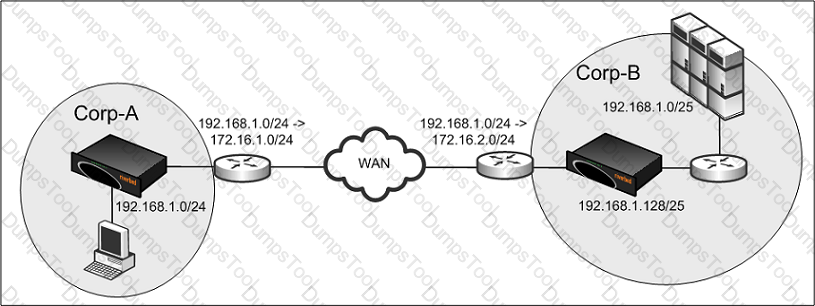
Corp-A and Corp-B have overlapping address space and therefore the network administrator implemented NAT to overcome this. Users from Corp-A NAT to 172.16.1.0/24 and users from Corp-B NAT to 172.16.2.0/24. Users in Corp-A use the destination address of 172.16.2.0/24 to access the resources in Corp-B. The servers in Corp-B use the client IP for authentication. You deploy the Steelhead appliance using the default WAN visibility mode but noticed all the connections are passed-through. What is the likely problem?
The exhibit shows a data center side serial clustering deployment. In this organization, not every remote site has a Steelhead appliance deployed, and all remote locations will be connecting to the data center.
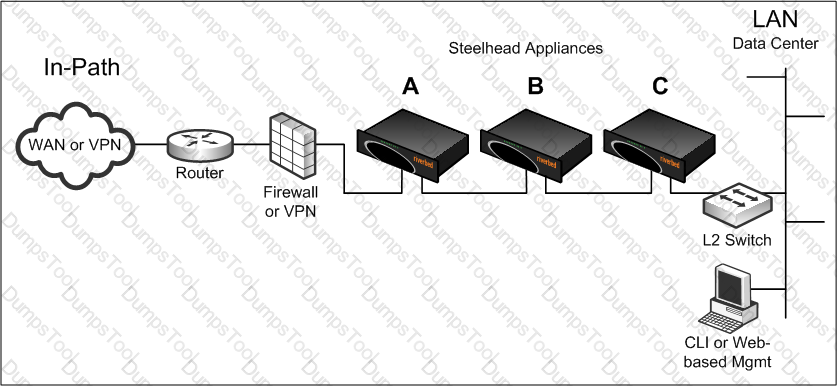
For connections initiated from the data center, there is a possibility that the Steelhead appliances shown in the exhibit will end up peering with each other, rather than the intended remote Steelhead appliances. Where are peering rules needed to prevent this problem?
Refer to the HTTP trace exhibit.
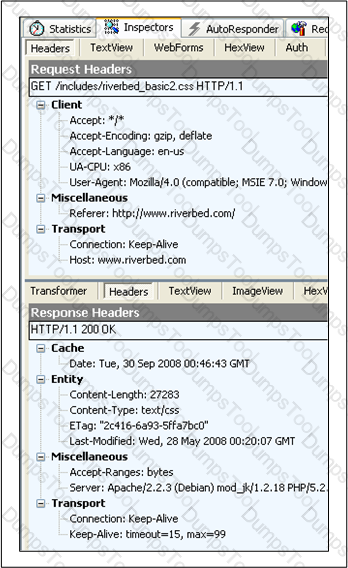
You noticed in the HTTP reports that you are not seeing any hits. What is required in order for HTTP optimization to work?
In a recent in-path deployment, users are complaining that some of their CIFS drive-mapping connections do not appear to be optimized. Upon further analysis, you discover the file shares reside on a domain controller. The Steelhead appliances are deployed in a default configuration. Which of the following is the most likely cause of the problem?
A customer with a new physical in-path installation decides to turn on the optimization service during lunch time on a working day. This is done so that he can see if the users perceive any performance improvement. When starting the optimization service, he does not enable the in-path kickoff option. Assuming there were several already active connections when he starts the optimization service, how will the Steelhead appliances handle these existing connections?
Refer to the exhibit.

A customer is reporting that the first connection from a user to the server is failing. However, subsequent connections work properly and are optimized. How can this problem best be resolved?
How many in-path rules will a WAN-initiated (i.e. SYN packet arrives at a WAN port of an In-path interface) single connection match? Assume no packet ricochet occurs (i.e. the SYN travels through the Interceptor appliance once).
Which user roles and permissions are supported by the CMC appliance? (Select 3)